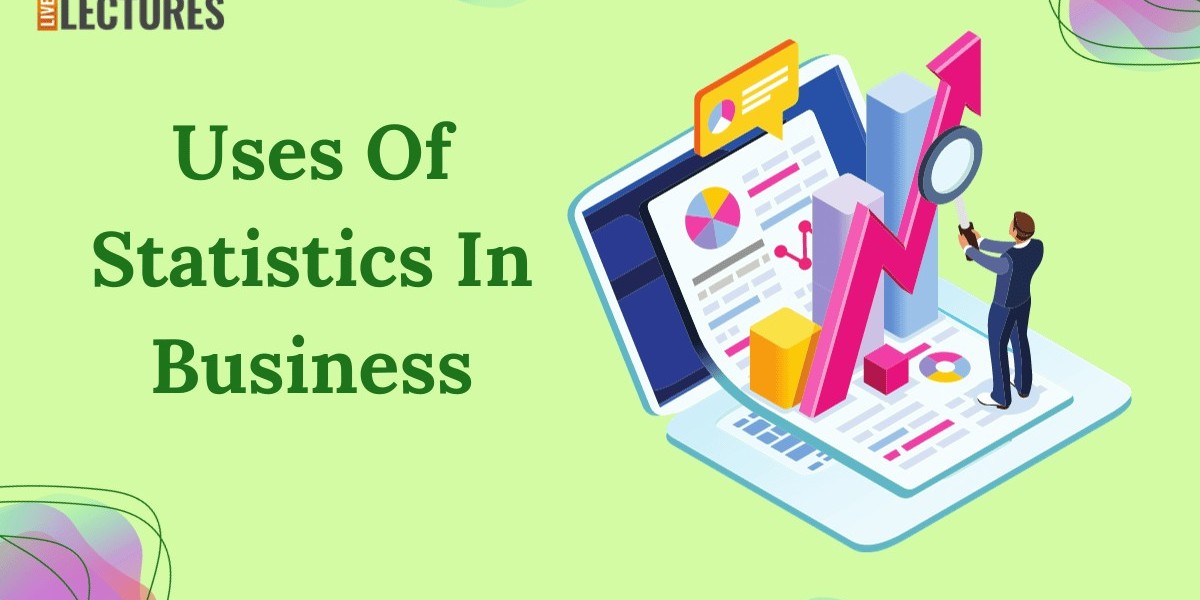Statistics is a powerful tool that plays a central role in helping businesses make informed decisions, optimize processes, and achieve their goals. In this comprehensive exploration, we will delve into the key uses of statistics in business, demonstrating how it aids in various aspects of operations, from market research to financial analysis, quality control, risk management, and beyond.
1. Market Research and Customer Insights
At the heart of any successful business is a deep understanding of its target market and customers. Statistics provides the means to gather, analyze, and interpret data, offering invaluable insights into consumer behaviors, preferences, and market trends. Here's how statistics aids in this critical area:
- Data Collection: Businesses employ statistical methods to collect data through surveys, questionnaires, focus groups, and online analytics. This data includes customer demographics, purchasing habits, and feedback on products and services.
- Data Analysis: Once data is collected, statistical tools such as regression analysis, cluster analysis, and factor analysis help identify patterns, correlations, and trends within the data. These insights enable businesses to tailor their offerings to meet customer needs.
- Market Segmentation: Statistical techniques facilitate market segmentation, allowing businesses to divide their customer base into distinct groups with similar characteristics. This segmentation aids in targeted marketing and product development.
- Competitor Analysis: Statistics can also be applied to analyze competitors' performance, market share, and customer satisfaction, providing businesses with a competitive edge.
2. Demand Forecasting
Predicting future demand is essential for businesses to efficiently manage their production, inventory, and supply chain. Statistics plays a critical role in demand forecasting:
- Time Series Analysis: Businesses use time series analysis to examine historical sales data and forecast future demand patterns. Methods like moving averages and exponential smoothing help in making accurate predictions.
-Regression Analysis: Regression models can incorporate various factors such as seasonality, marketing efforts, and economic indicators to refine demand forecasts.
- Inventory Management: Accurate demand forecasts ensure that businesses neither overstock nor understock their inventory, leading to cost savings and improved customer satisfaction.
3. Quality Control
Maintaining consistent product quality is vital for customer satisfaction and brand reputation. Statistical process control (SPC) and quality control charts are integral to this effort:
- SPC Techniques:SPC methods like control charts and process capability analysis monitor production processes in real-time. Any deviations from established standards trigger corrective actions to maintain quality.
- Root Cause Analysis: Statistical tools assist in identifying the root causes of defects, enabling businesses to implement preventive measures and reduce the likelihood of future quality issues.
- Six Sigma: The Six Sigma methodology, built on statistical principles, aims to minimize process variation and defects. It has been widely adopted in industries to achieve higher levels of quality and efficiency.
4. Financial Analysis
Financial decision-making is inherently quantitative, and statistics underpins many aspects of financial analysis and planning:
- Financial Modeling: Businesses create financial models that rely on statistical data to project future revenues, expenses, and profits. These models guide budgeting and investment decisions.
- Risk Assessment: Quantitative analysis assesses financial risks. Tools like value at risk (VaR) and Monte Carlo simulations help quantify potential losses due to market fluctuations or economic uncertainties.
- Portfolio Management: Investment firms use statistical analysis to build diversified portfolios that balance risk and return. Modern portfolio theory, grounded in statistics, guides asset allocation strategies.
5. Operational Efficiency
Efficiency is a hallmark of successful businesses, and statistical methods aid in optimizing various operational processes:
- Lean Six Sigma: Combining Lean and Six Sigma principles with statistical analysis helps identify and eliminate waste, streamline processes, and enhance overall efficiency.
- Process Optimization: Statistical tools like Design of Experiments (DOE) allow businesses to systematically test different process parameters to identify the most efficient configurations.
- Logistics and Supply Chain: Businesses use statistical models for demand forecasting, inventory optimization, and supply chain logistics, reducing costs and improving delivery times.
6. A/B Testing and Experimentation
Businesses often need to test new ideas, products, or marketing strategies. A/B testing and experimentation are valuable for data-driven decision-making:
- A/B Testing: In A/B tests, statistical analysis compares two versions (A and B) of a webpage, marketing email, or product feature to determine which performs better in terms of user engagement, conversion rates, or other relevant metrics.
- Experimental Design: Statistical experimental design helps plan experiments to minimize bias, control variables, and ensure that results are statistically significant.
7. Customer Satisfaction Measurement
Satisfied customers are more likely to become loyal customers and advocates for your brand. Measuring customer satisfaction is an area where statistics plays a pivotal role:
- Surveys and Feedback Analysis: Statistical analysis of survey data, including techniques like sentiment analysis and Net Promoter Score (NPS), helps gauge customer satisfaction and identify areas for improvement.
- Complaint Analysis: Analyzing customer complaints statistically helps businesses pinpoint recurring issues and take corrective actions to enhance overall satisfaction.
8. Risk Management
All businesses face various types of risks, from financial market volatility to operational disruptions. Statistical analysis assists in risk assessment and mitigation:
- Credit Risk Modeling: Financial institutions use statistical models to assess the creditworthiness of borrowers, helping them make lending decisions and manage credit risk.
- Insurance Pricing: Actuarial science relies heavily on statistics to determine insurance premiums, calculate reserves, and assess potential claims.
- Supply Chain Risk Assessment: Businesses evaluate supply chain risks using statistical methods to develop contingency plans for disruptions, such as natural disasters or geopolitical events.
9. Human Resources Management
Managing human resources effectively is vital for organizational success. Statistics helps in various HR-related functions:
- Workforce Planning: Businesses use workforce analytics to forecast staffing needs, manage talent acquisition, and optimize employee deployment.
- Performance Evaluation: Statistical methods assist in conducting fair and objective performance evaluations, ensuring that employee assessments are based on data-driven criteria.
- Employee Engagement: Surveys and statistical analysis gauge employee satisfaction and engagement levels, guiding HR initiatives to enhance the workplace environment.
10. Marketing Effectiveness
Marketing is inherently data-rich, and statistics aids in assessing the effectiveness of marketing campaigns and strategies:
- Marketing Analytics: Businesses use statistical analysis to measure the ROI of marketing efforts, track customer acquisition costs, and optimize marketing spend.
- Customer Segmentation: Statistical clustering techniques group customers with similar characteristics, allowing businesses to tailor marketing messages to specific segments.
- Social Media Analytics: Statistical analysis of social media data reveals insights into customer sentiment, engagement trends, and the impact of social media campaigns.
In conclusion, statistics is a fundamental tool that empowers








